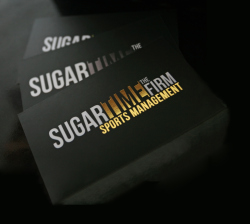
Choosing colors for your business cards and other marketing materials should not be an arbitrary process. Color does more than any other design element in creating a mood or effect in the materials you present to the world as reflections of your business or yourself.
So what colors should you incorporate in your designs? Well, it depends on your intention. Let’s take a look at some common colors and the messages they send to your potential audience.
>
Yellow:
Happiness (think the stereotypical “smiley face” or a shining sun in a kid’s drawing) as well as wisdom are the connotations that come with yellow. Yellow is said to sharpen concentration and memory (this is why legal pads are yellow). These associations make it a good choice for academic professionals or people who want a scholarly image, like counselors or librarians. On the down side, yellow is sometimes associated with anxiety. To avoid this effect, choose yellows that are more muted or pastel, rather than garish hues.
Brown:
People innately associate brown with, well, dirt. This isn’t necessarily a bad thing. Brown conveys earthiness, grounded-ness, and dependability. It also imparts a sense of antiquity, which also serves to give the impression that a business has been around for a while and isn’t going anywhere any time soon. These traits make brown great for an antiques dealer, bank-related businesses, or any other enterprise that wants to be seen has having a family history or deep roots. For these same reasons, it’s not a great choice for technology companies, media companies, or any other enterprise looking to convey modernity through its marketing materials.
Red:
 Red is a bold, audacious color. It conveys a sense of heat, passion, and enthusiasm. It is also said to stimulate the appetite (which is why it’s so prevalent in McDonald’s restaurants and other fast food chains). On the other hand, it lacks subtlety. These characteristics make it a good choice for a manager of a sexy steakhouse, but not so much for an acupuncturist (who would probably prefer to convey a sense of serenity through cooler colors).
Red is a bold, audacious color. It conveys a sense of heat, passion, and enthusiasm. It is also said to stimulate the appetite (which is why it’s so prevalent in McDonald’s restaurants and other fast food chains). On the other hand, it lacks subtlety. These characteristics make it a good choice for a manager of a sexy steakhouse, but not so much for an acupuncturist (who would probably prefer to convey a sense of serenity through cooler colors).
Pink:
Pink is in the same color family as red, but its dilution with white takes away a lot of the brashness that red possesses. Instead, pink offers a feeling of safety, caring, nurturing, tenderness, and a feeling of youth or child-friendliness. These characteristics make it great for daycare professionals, non-profits, nurses, and other care givers. Of course, it also has a feminine air, making it a good choice for retail enterprises that cater mainly to women.
Orange:
Orange has been touted as “the color of the year” for 2012. If you look around, you’ll notice that it’s everywhere, from nail polishes, to clothing, to large corporations’ branding (look at AT&T’s website, just as one example). Why so popular? It’s associated with liveliness and creativity. It’s got a spicy, tropical flavor, and is certainly upbeat – an asset in times of economic uncertainty. It’s great for any business that would like to broadcast a youthfulness or vigor. It’s not so great for anyone looking to create a very serious, stoic image.
Green:
Green is a welcome, mellow, natural color that lends itself to any project requiring a sense of calm, balance, and authenticity. It also inspires feelings of growth, health, and freedom. For obvious reasons, it’s also associated with wealth. Basically, green is a go for almost anyone, whatever his or her profession, unless the desired image is aggressive.
Blue:
Blue, like green, conveys a natural, safe, and calming feeling. Evoking images of water, blue is perhaps even more calming. Blue is conservative and calls to mind a sense of solitude. With its relaxing and aquatic aura, blue is great for spas, resorts, and of course water parks. It’s also good for businesses that want to seem easily approachable and open-minded. Again, it’s not great for race tracks, paint ball ventures, fireworks manufacturers, and other explosive or aggressive businesses.
Black:
Black is the absence of color, and throughout time has been given a “dark” and sometimes devious reputation. It is mysterious, dangerous, and absolute. It works wonderfully for any business looking to evoke a sense of the unknown – for example, nightclubs, magicians, or movie theaters. It’s also good for those looking for a “hard” or tough, no-nonsense image. This is why CrossFit gyms and many other fitness institutions choose black for the background for their business cards, logos, and other marketing collaterals.
White:
White evokes a sense of cleanliness and light. It promotes memories of churches and holy things. Many business cards could benefit from having a decent amount of white space because it leaves plenty of opportunity for the eye to find the actual printed words, which are of ultimate importance when it comes to most business cards.
Of course these are just guidelines. Not every single gym can choose black as its signature hue, or the fitness world would soon start to look pretty boring. Similarly, a spa that wishes to set itself apart may forgo blue and green for a more energetic hue like orange or red (or better yet, add orange accents to a primarily blue card). Still, this handy guide should give you an idea of the feelings your color choices are likely to evoke.